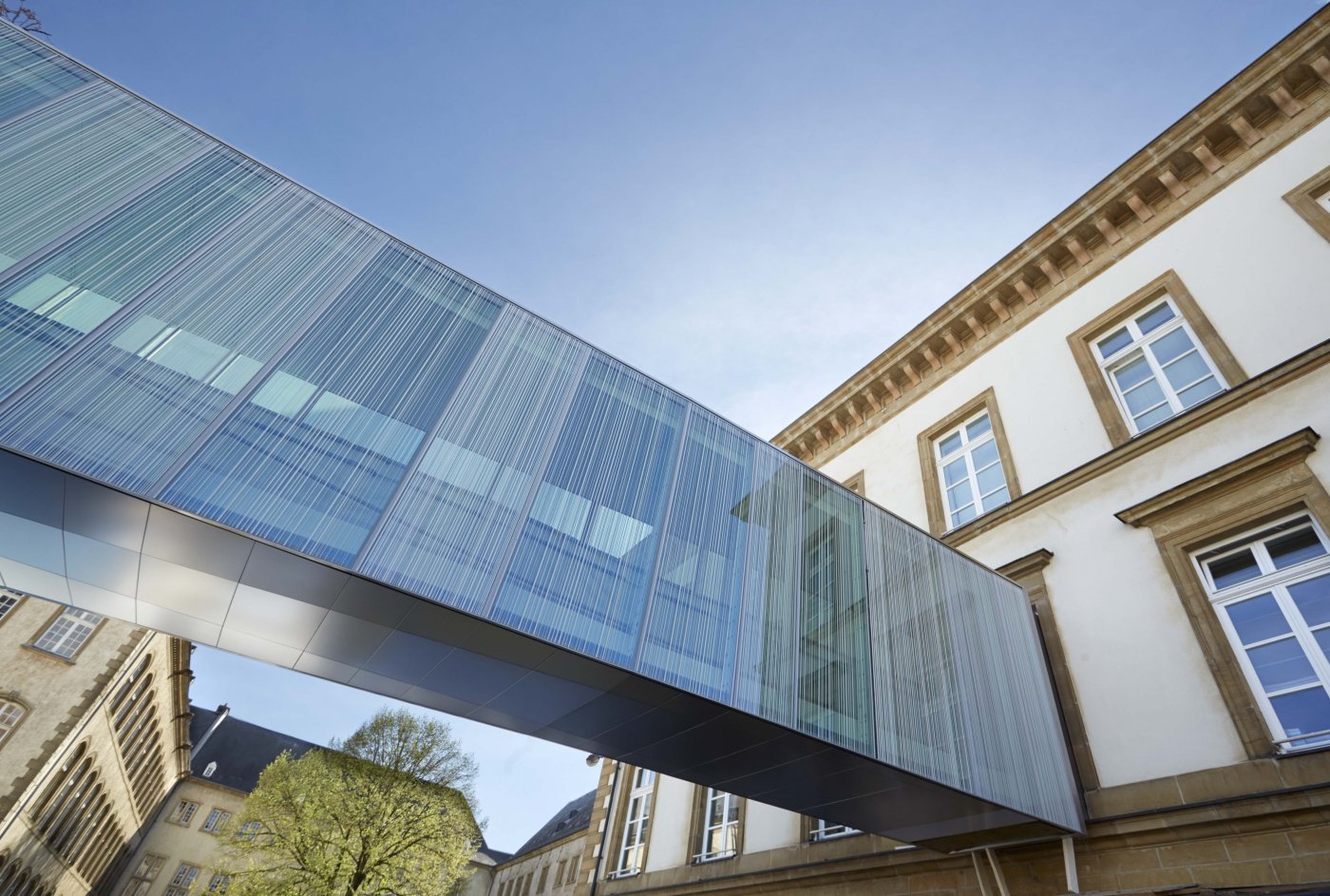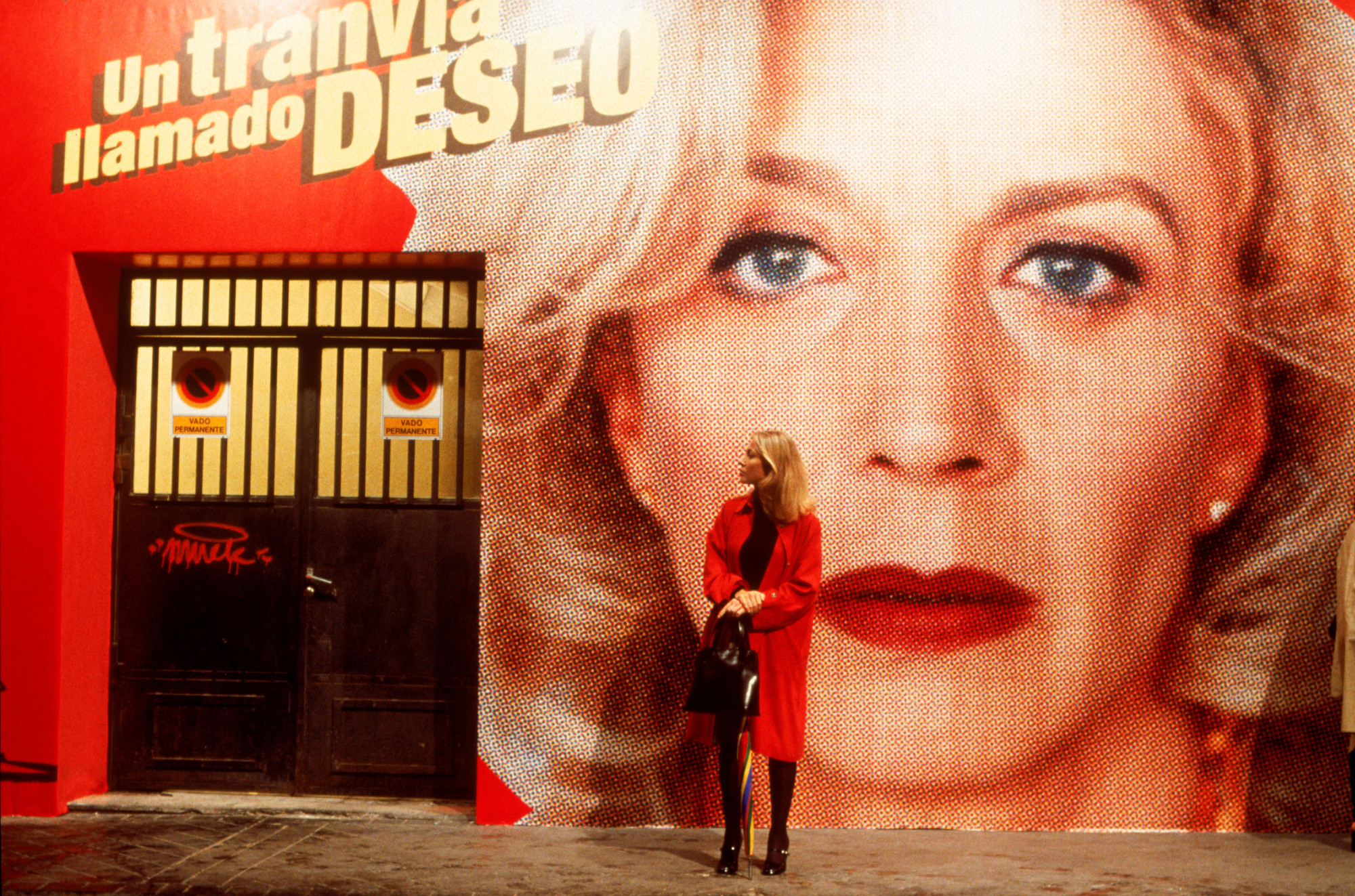Summary record
Video
Community gardens
Questions by Joël Delvaux
The population of Luxembourg City is growing rapidly. The City has adopted a policy in favour of strong demographic growth but, in our view, this policy is overly ambitious and ultimately unsustainable. There are increasing numbers of people living in accommodation without access to a garden.
This growth policy has major environmental and social consequences. In a recent report, the European Commission highlighted poor air quality in Luxembourg City.
Gardening not only promotes physical and mental well-being, it also helps people to reduce their reliance on food products from supermarkets. Thus, gardening contributes to a degree of food autonomy, promotes short food supply chains and is environmentally friendly. In addition, if bio/organic criteria are respected, it helps to encourage biodiversity. Gardening also has an educational aspect and, when undertaken as a community, strengthens social ties and the feeling of belonging to a community, i.e. social cohesion.
I would therefore like to put the following questions to the college of aldermen:
- What is the City of Luxembourg's policy on public gardens?
- How many community gardens does it currently manage?
- What types of community gardens exist in Luxembourg City?
- How many people are on the waiting list for an allotment (in each city district)?
- How does the City of Luxembourg plan to cater for this demand?
- Does the City of Luxembourg intend to create more community gardens, and if so, where and on which land?
- Which plots are available for community gardens?
- When planning new residential projects, does the City of Luxembourg typically include plans for community gardens?
Response from Patrick Goldschmidt
Alderman Goldschmidt replied that there are four types of gardens in Luxembourg City:
- Municipal gardens: these are garden plots intended for individual use and are usually located behind housing developments; there are several gardens of this type throughout Luxembourg City;
- Public gardens: these are the municipal parks;
- Community gardens: these are gardens that are tended and managed by a group of residents (between 10 and 30 people) living in the area where the garden is located. They are run in accordance with environmental criteria, on the basis of rules of procedure established by the City of Luxembourg;
- Allotment gardens: these are individual-use plots that are grouped together across a site – known as a cité jardinière – and managed by an association that is a member of the Ligue du Coin de Terre et du Foyer (Luxembourg Land and Home League).
At present, the City manages five community gardens, in Bonnevoie, Ville Haute-Gare, Limpertsberg, Pfaffenthal and the Grund.
Regarding the number of people on the waiting list: since the waiting list for each city district is fairly exhaustive, it has been proposed that the table listing the requests from the various city districts be made available to all three interested parties. Currently, there are 261 pending requests for municipal garden plots, 208 for community gardens, and 151 for allotments.
The waiting time for community gardens is less than three years. In view of the eco-friendly criteria, people who wish to take part in the scheme must live in the area so as to avoid motorised transport across the city. There are also other community garden projects in the pipeline, notably in the Merl-Belair district where potential plots are currently being surveyed. The results will soon be presented to the college of aldermen, and the project is likely to be launched in 2020.
Other requests from residents in Gasperich, Hamm and Pulvermühle are being assessed. If a sufficient number of people are interested, applicants will be asked to suggest an association that could take on the role of managing the site, such as a local interest group.
There are currently no plans to include community gardens in new residential projects, as the accommodation will be built on privately-owned plots, whereas community gardens are intended for use by all residents in a given neighbourhood.
Energy-efficiency upgrade of municipal buildings
Question from Carlo Back
During the discussions on the 2019 budget, the alderman responsible for the environment reported that 395 buildings (169 non-residential buildings and 226 residential ones) had obtained an energy performance certificate, and 386 energy performance certificates (231 non-residential buildings and 155 residential ones) were yet to be issued (i.e. roughly 50% of municipal buildings).
With these facts in mind, I would like to ask the following questions:
- Does the college of aldermen have an action plan for the energy-efficiency upgrade of these buildings?
- What are the projected time frames, and in turn, what are the planned deadlines to effectively upgrade all buildings belonging to the City of Luxembourg?
- According to the energy performance certificates that the City currently holds, what are the potential energy savings that can be achieved by upgrading these buildings?
Response from Serge Wilmes
Alderman Wilmes replied that drawing up energy performance certificates is an enormous and time-consuming task and that two temporary workers have been hired to find building plans and prepare the data required to have the energy performance certificates drawn up by specialist consultancy firms. To date, around half of the energy performance certificates have been issued.
As the contracts of the two temporary workers have now ended, a recruitment drive is currently under way to find new staff to continue the task and track the energy performance of municipal buildings. In the meantime, it is possible to foresee that a total upgrade to energy performance category D, which is felt to be realistic in view of the constraints inherent in old buildings, could reduce energy consumption by 13,558 MWh/year and CO₂ emissions by 2,363 tonnes/year by 2030, which would equate to 36% of the municipal administration's total potential energy savings. According to its roadmap report (Leitbild), the City has committed to reducing its CO₂ emissions by 40% by 2030.
Finally, it is the responsibility of the Service Bâtiments (Buildings Department) to produce a multi-year plan for projected energy-efficiency upgrade works, taking into account the buildings' energy balance and the required financial and human resources.
Floor of the Saint Alphonse church
Question from Tom Krieps
Last Friday, a large crack running a significant length appeared in the floor of the Saint Alphonse church (located on the corner of Rue Beaumont).
Following an inspection, the church was closed to the public.
I would therefore be grateful if you could answer the following questions:
- Given that this church is municipal property, shouldn't the City be financing the repairs to the building?
- Is the building under threat of ruin?
Response from Lydie Polfer
The Mayor and Chair responded that the church does not belong to the City, and therefore it is not the responsibility of the municipal administration to repair it.
Compensation and means of support to traders affected by the tram-line construction works
Question from Claudine Konsbruck
Luxembourg City is currently undergoing sweeping changes. One of the major ongoing projects is the construction of the tram network. While great progress is being made, businesses in the Gare district are now faced with major ongoing works. Access to certain streets has become more difficult, and some traders have complained of a drop in the number of customers. In this regard, the company Luxtram, in which the City of Luxembourg is a partner, has set up a special compensation fund for businesses situated along the tram route. In light of this, I would like to ask the following questions:
- What are the criteria on which this fund awards compensation?
- To date, how many businesses have applied for compensation?
- What are the resources available to the municipal authorities to help these businesses, most notably those that are not located directly on the tram route and consequently ineligible to file a claim with the compensation fund (e.g. could vacant premises be made available to these businesses while the works continue)?
Response from Patrick Goldschmidt
Alderman Goldschmidt replied that the City has neither a legal basis nor a budget to compensate traders for any negative impacts resulting from the works. However, the City provides the Luxembourg City Business Association with financial support in the amount of over €300,000 a year. The City has also taken a number of special measures to support businesses. In particular, it reviewed the parking charges at the Fort Wedell and Neipperg car parks and decided to make parking free for the first hour at these car parks between 29 November and 25 December 2019. The Neipperg car park is served by public transport to the city centre every three minutes, so people can do their shopping in both of these districts.
In addition, the businesses benefit from advertising on the City's social media pages (Facebook, Instagram).
With respect to applications to Luxtram for compensation, please note that the applications are filed with Luxtram and not the municipal authorities. According to the available information, to date, 11 such applications have been filed. These applications are currently being examined, and no decisions have yet been made. The committee in charge of these matters has only recently met.
Besides, it should not be forgotten that the work is still ongoing and, typically, it is not until a project has been completed that the impact of the works can be accurately assessed.
Affected businesses that are not directly on the tram route are advised to submit an application to Luxtram. However, it is not within the City administration's remit to discuss the assessment criteria applied by Luxtram.
In view of the current difficult situation, new businesses that are planning to open premises in the vicinity should try to negotiate a reduced rent with their landlords, or delay their plans until the work is completed. Landlords are asked to make an effort in this regard. One feasible solution would be to set up a sort of "rent bank", so that outstanding reduced rents can be paid in instalments as and when business as normal resumes once the work has been completed. For businesses experiencing difficulties, this approach might prove to be more efficient and quicker than the compensation procedure established by Luxtram.
Installation of outdoor gym equipment in Merl Park
Question from Héloïse Bock
The outdoor gyms at the Gare and Grund ends of the Pétrusse Valley and in Kaltreis Park, Laval Park and Kockelscheuer have been a great success. They are appreciated both by local residents and by people who work nearby (and even further away), who use them during their lunch break to get a little exercise.
As there is a wide range of equipment available, users can tailor the intensity of their workouts to suit their needs. Signs have been erected with instructions on how to use the different items of equipment correctly, and information on which body parts they target.
Merl Park is being used by an ever-growing number of people, especially since the restaurant has been completely renovated and the project to install trampolines over the summer has been set up. The park is near many secondary schools, which bring together thousands of school children.
In light of the foregoing and in accordance with article 9 of the municipal council's internal rules and regulations, I would like to ask the following questions:
- Is the college of aldermen prepared to consider installing outdoor gym equipment in Merl Park?
- If so, could the various options be put forward in a meeting with the relevant committees?
- Would it be possible to complete the installation for spring 2020?
Response from Serge Wilmes
Alderman Wilmes replied that no public consultations have yet been held concerning the redevelopment of Merl Park. On the other hand, the multi-annual plan makes provision for the installation of a multi-purpose children's playground. The plan will be put to the college of aldermen in 2020, and a public meeting will be held in due course.
Generally speaking, the City does not have a fixed policy regarding the installation of open-air fitness equipment. Often, equipment is installed in locations that are also suitable for other open-air activities, such as jogging or Nordic walking, as is the case in Laval Park and Kaltreis Park. Nonetheless, the idea of installing outdoor gym equipment in Merl Park could certainly be examined in the wider context of the park's redevelopment.
Current active-travel measures
Question from Guy Foetz
While it is generally acknowledged that promoting active travel in our city requires the implementation of hundreds of everyday measures, it is enormously frustrating to see situations which make life difficult for cyclists. My question relates to two such situations.
- Around the new shopping centre in Ban de Gasperich, there are no secure bike parking racks available. How does the college of aldermen intend to address this sorry state of affairs?
- Currently, it is difficult to get from Rue du Père Raphaël to Rue Christophe Colomb by bike, because a large amount of construction equipment has been left on the path, surrounded by metal barriers. Cyclists are forced to dismount and walk their bikes through the narrow gap left on the pavement. This has been the case since February, and ought to have been resolved by the end of July this year. It is clear that, apart from one container, no more equipment is being left in the enclosure. Why is the firm in question still being allowed to keep its barriers here?
It should also be noted that even when the barriers are eventually removed, the concrete blocks installed by the City to prevent cars from travelling from the residential area to the business park will still take up the whole width of the roadway, completely blocking the passage between Rue du Père Raphaël and Rue Christophe Colomb for cyclists, forcing them to dismount and use the pavement to continue on their way. Why not leave a gap in the concrete barrier to allow cyclists to go through? This would make life much easier for them!
Response from Patrick Goldschmidt
Alderman Goldschmidt confirmed that there is little room to install a bike parking rack in the area, where only a small part of the property is state-owned. The City has contacted the shopping centre to seek a solution, and the latter also intends to install one or several bike parking racks on its property to serve its customers. At present, it is not known whether any steps have yet been taken, but the City will monitor the situation.
Regarding the difficulties in getting from Rue du Père Raphaël to Rue Christophe Colomb, a permit to occupy public space has been issued. The permit has been extended to 20 December 2019, and will be extended again to 2020. Lastly, the developer has been informed that a space that is wide enough for bikes to get through must be left, and if need be, the City will contact them again.
Enhancing the appeal of the City's public spaces
Question from Elisabeth Margue
I would like to follow up with respect to the creation of an artificial beach on Place du Théâtre, and the creation of a gathering and leisure area in the very heart of the city, as part of enhancing the appeal of the City of Luxembourg's public spaces.
As such, I would like to put the following questions to the college of aldermen:
- What is the City of Luxembourg's assessment of the initiative to create an artificial beach in the city centre?
- Does the City of Luxembourg have any other projects to enhance public spaces in the pipeline, notably where Place du Théâtre or other public squares are concerned?
- In this context, is the City of Luxembourg planning to hold a public consultation?
- Has the City of Luxembourg been invited by the government to help reshape national initiatives aimed at enhancing the appeal of the city's public spaces?
Response from Serge Wilmes
Alderman Wilmes replied that the betterment of public spaces is one of the college of aldermen's priorities. One example of this is the creation of the new Service Espace public, fêtes et marchés (Department of Public Spaces, Festivals and Markets).
With respect to the artificial beach on Place du Théâtre, known as "Theaterplage", feedback from users has been extremely positive. The artificial beach has been especially popular with families with children. A "Poppentheaterplatz" (puppet theatre) has been open since 7 December 2019, with shows every Saturday, Sunday, Tuesday and Thursday to bring life to Place du Théâtre during the end-of-year season and the winter months. This strategy is known as "place making" or "place management", and involves the revitalisation and upgrade of public spaces. It is a town planning method that involves hosting certain types of events in other public spaces around the city.
Pending the completion of redevelopment works at Place du Théâtre, which will still be some time in coming since the works cannot be completed until the car park has been renovated, the situation should be considered as temporary. Public consultations will be held in the event of a permanent development project, as was the case for Place de Paris, Place Joseph Thorn and Spidolsgaart (Pfaffenthal). There are already several ideas in the pipeline for enhancing the appeal of other public spaces, including Place des Bains and
certain spaces in the Gare district.
There is also a project to publish a website cataloguing all past and future projects, and to encourage people to get involved on the ground.
With regard to the existence of national initiatives for enhancing the appeal of public spaces within the city, the municipal administration is working with the state authorities on a project involving Place de la Constitution, which is state property and used by the City. A development project for Place de la Constitution is currently in the study phase.
In addition, the City has been included in a public-space improvement project initiated by the Fonds d'Urbanisation et d'Aménagement du Plateau du Kirchberg. It is encouraging to note that there is definitely a desire to improve quality of life in public spaces.
Homeless people and their pets
Question from Claudie Reyland
People with no fixed abode are often accompanied by a dog (or sometimes a cat or other pet). These animals are extremely valued companions for them, and in most cases, owner and pet are inseparable.
However, pets are not allowed in most of the city's homeless shelters. As such, many homeless people choose to sleep on the streets rather than be separated from their pet.
I would therefore like to put the following questions to the college of aldermen:
- How many of the City of Luxembourg's homeless shelters accept pets?
- Would it be possible to increase the number of places in these shelters for people with pets?
Response from Maurice Bauer
Alderman Bauer replied that, within Luxembourg City, there are five emergency shelters for homeless people. These include the Foyer Ulysse, run by Caritas Acceuil et Solidarité ASBL and financed by the Ministry of Family Affairs, Integration and the Greater Region (Ministère de la Famille, de l'Intégration et à la Grande Région). The municipal administration is not involved in the running of this shelter. Additionally, there are the Nuetswaach night shelters managed by Caritas and the Red Cross and financed by the Ministry for Family Affairs, Integration and the Greater Region. Also, there is the Abrigado shelter, managed by the Comité national de défense social (National Social Protection Committee) and financed by the Ministère de la Santé (Ministry of Health) and the City of Luxembourg, and the seasonal "Wanteraktioun" project, organised by different managers and financed by the Ministry of Family Affairs.
Three shelters admit pets with their owners, namely the two night shelters on Rue Michel Rodange and in Eich, and the "Wanteraktioun" shelters. Nevertheless, it is up to the management of the centres in question to decide whether to admit the person and their pet, depending on the animal's behaviour and taking the safety of other users into consideration.
Elevator linking the railway bridge with the "Gare Rocade" bus stop
Question from Tom Krieps
I would like to ask a question regarding the elevator linking the railway bridge with the "Gare Rocade" bus stop.
This stop is destined to play an increasingly important role for a number of additional bus lines during the tram-line construction works at the train station.
However, the elevator is out of service, and has been for quite some time. Persons with reduced mobility and people with suitcases/pushchairs are therefore forced to climb the stairs or use the elevator on the other side of the street, until that one breaks down as well. The railway bridge seems to have an adverse effect on the elevators linking it to street level. Thus, my question is:
- When can we expect to have a working elevator?
Response from Simone Beissel
Alderwoman Beissel replied that the elevator in question has been back in operation since 21 November 2019, and that the repair work had taken a considerable amount of time due to the takeover of the company Luxlift by the multinational Kone. Given how frequently the elevator is used, a more powerful motor has been installed, with solid traction cables.

















